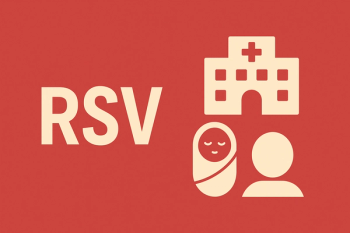
HIV Testing, Positive Results Dropped in the US During COVID-19
The pandemic's effect on in-person care prioritization may have indirectly influenced the rate of screening opportunities in at-risk persons.
Rates of
In new data presented at the
However, the same research showed testing rate differences at the regional level, implying the impact of differing state-level responses to COVID-19 that would reduce in-person care rates—and, consequently, opportunities to screen for HIV.
Led by Dusina Curanovic, investigators sought to compare HIV diagnostic test volume and positivity rates observed in the pandemic period, to pre-pandemic rates. As they noted, the national reduction in ambulatory care center visits may affect screening rates and hinder progress toward “90-90-90” HIV management goals in the US.
They compared the volume of ordered fourth-generation HIV-1/2 antigen/antibody diagnostic tests in the US and Puerto Rico from the 2 time periods. Valid test results were interpreted by investigators based on Centers for Disease Control and Prevention (CDC) guidelines.
Curanovic and colleagues assess HIV positivity and acute infection rates by geography, patient sex and age, and compared between the 2 time periods.
Along with the 17.5% drop in HIV tests, HIV positivity rates decreased from 0.677%in 2019 to 0.662% in 2020 (P = .023). The proportion of positive tests reporting acute HIV infection similarly decreased, from 1.154% to 0.910% (P = .016).
Regionally, investigators observed significant declines in positivity in the Southeast and South Central populations of the US. In the West, however, positivity increased from 0.574% to 0.664% (P <.0001).
HIV positivity increased among males by .073 percentage points in 2020; those aged <25 years old (.151) and 25-40 years old (.096) reported even greater increases in HIV positivity.
Positivity decreased in females, most significantly in those aged 25-40 years old (.016 percentage points; P = .003). However, acute HIV infection positivity significantly increased in women <25 years old (3.506 percentage points; P = .028).
Curanovic and colleagues concluded that healthcare engagement may have been affected by state-level restrictions and concerns of COVID-19 transmission, resulted in the significant HIV testing decrease. They added that the increase in HIV positivity and concomitant decrease in acute infection among men may suggest delayed healthcare engagement during the pandemic.
“Diagnostic HIV test volume, positivity, and acute infection rates declined during the COVID-19 pandemic, but regional and sex-based differences were noted,” they wrote. “State-specific restrictions and SARS-CoV-2 transmission concerns may affect healthcare engagement among those at high risk for HIV infection.”
Newsletter
Stay ahead of emerging infectious disease threats with expert insights and breaking research. Subscribe now to get updates delivered straight to your inbox.































































































































































































































































































